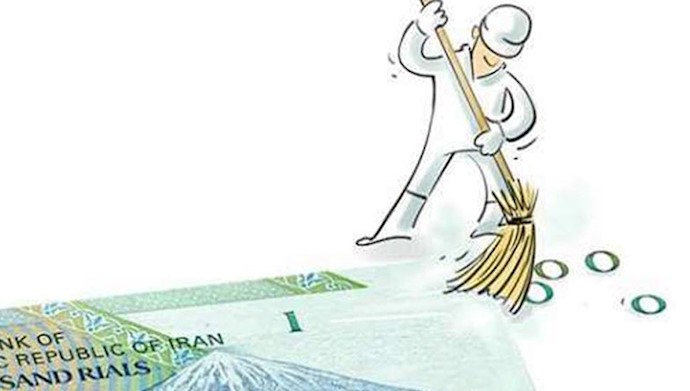Analysis by PMOI/MEK
Iran, April 4, 2019 – Amid a spectrum of growing crises in Iran, economic duress and its resulting unfortunate situation for the livelihoods of millions of Iranians are the direct problems that highlight the Iranian regime’s utter incompetence and corruption.
The current economic misery and growing discontent among the population have also become the root of the growing power struggle among the ruling elite where rivaling factions blame each other of corruption.
While the regime’s supreme leader Ali Khamenei called the new Persian year, year of “Boosting Production,” the chief of the economic commission in the Iranian parliament, Mohammadreza Pour-Ebrahimi, attacked Hassan Rouhani’s government over economic policy decisions and said: “Several times I asked the president personally about who makes economic decisions? This is a riddle to us.”
“Assigning the [fixed] value of 4,200 [tomans] for the [U.S.] currency was a catastrophe for the Iranian economy and our prediction was that it will destroy the country,” he further said in an edited video clip that was published on Bultannews on March 30.
“I personally asked the economic deputy of the president, the then-minister of the economy, and the then-president of the central bank, whether they agreed with this decision? And interestingly, the economic deputy of the president said, Mr. Pour-Ebrahimi, I disagreed. The economic minister said angrily, I disagreed categorically, and the president of the central bank also said that he disagreed,” he added.
“We are wondering who is making decisions? What is the decision-making process of the country?” he concluded.
Abbas Argoun, member of Tehran’s Chamber of Commerce says about the “biggest economic mistakes of the government during the last Persian year [2018-2019]: “I believe that one of the biggest economic mistakes in the past year was the decision to assign the value of 4,200 [tomans] to the [U.S.] currency and how it was distributed.”
In the Iranian economy, the government assigns a fixed value to the U.S. dollar (currently at 4,200 Iranian tomans or the more official denomination of 42,000 Iranian rials) while the real U.S. dollar value against the Iranian currency in exchange markets is usually much higher (currently at about 13,500 tomans per U.S. dollar).
U.S. dollars can only be purchased at state-fixed prices by eligible buyers who intend to import essential goods and sell them on the market in Iran for prices that should be controlled by the government, or import raw materials for the manufacturing sector, etc.
But the hard truth is far from that. Politically well-connected oligarchs, family members of the ruling elite, Islamic Revolutionary Guards Corps members, etc. buy U.S. dollars at state prices but, for example, export the cheaply bought goods to neighboring countries and sell them for free market prices, making insane amounts of profit along the way.
The whole illicit economy of smuggling and profiteering that is built around U.S. dollar exchange at state prices is one of the major reasons why food prices are skyrocketing in Iran and some medicaments are hard to come by.
In an interview with Fararu website, Hassan Rouhani’s deputy minister of labor, Ali Zaeem, described the economic crisis and its worsening situation as follows: “Corruption increases daily and the economy becomes more of a shamble. And this in a way that very few predicted such an economic situation at the beginning of the year. Iran’s current economic situation is a shamble and a mess and lower levels have suffered more damages. Why have news about corruption and bribery become business as usual for the people and what are its consequences?”
“Indeed, when the economic situation changes, it will unhinge the political balance and create many problems. For instance, in days of crisis, some people will gain more power and some people’s power will decrease in return and these ups and downs will distance the political climate from the necessary balance, bringing about chaos,” he warned about the political consequences of economic difficulties for the whole Iranian regime and its current power structure.
Baharnews website paints a gloomy picture of the Iranian economy and writes: “Many pundits and market insiders believe that the [Persian] 2019-2020 year will be very difficult and full of challenges for the crisis-riddled economy of the country. The heavy stagnation that has covered the manufacturing sector of the country over the past few years, has deepened and spread a lot in recent months, while experts believe that until now, the sanctions’ impact hasn’t been felt yet.”
In an article titled, “The Systemic Defeat”, Ali Dini Torkamani, an Iranian economist expresses his pessimism for reforms and sums up the situation saying: “Because of a weak government and blatant mismanagement, the Iranian society and economy are struggling with a phenomenon called the ‘systemic defeat’. It has become a very worn and condemned building that one can’t address its problems with micro solutions. The house needs fundamental renovation.”
A fundamentally renovated country won’t be called the Islamic Republic of mullahs anymore. That’s for sure.





